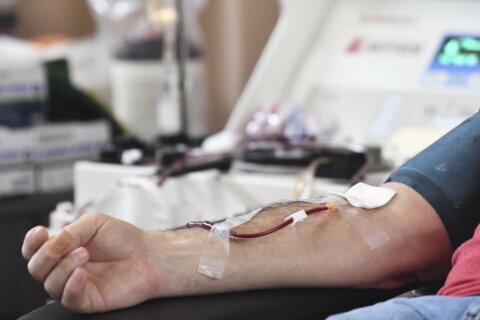WASHINGTON — We all know how tough the dry, cold air of winter can be on your skin. Turns out the dog days of summer can be rough, too.
The heat and humidity, for example, can result in little itchy bumps on the skin — a condition technically known as miliaria, though most of us refer to it as prickly heat or just heat rash.
It’s a dermatological cousin of acne, which is caused by blocked pores. This time, it is the sweat ducts that get clogged, usually by salts from perspiration, bacteria and dead skin cells.
The sweat gets trapped under the skin’s surface, causing inflammation. And while it can happen to just about anyone, it seems to be more common in children and the elderly. Babies often get it on their necks. For older kids and adults, it is likely the result of friction, either from clothing or parts of the body that rub together, like the inner thighs or armpits.
The good news is there are ways to prevent it, according to Dr. Adam Friedman, an associate professor of dermatology with the George Washington University School of Medicine and Health Sciences.
“First and foremost, you want to wear lightweight clothing and breathable clothing at that,” Friedman advised, along with making sure to wipe off sweat regularly.
“If you are sweating a lot, try to towel down with a wet washcloth to remove those salts from the skin.”
And if you do happen to get a rash, try using an anti-bacterial wash, like the ones with benzyl peroxide that are designed to help control acne. Friedman says that can help open the pores and clean out the bacteria that could be causing the redness.
Another common rash linked to summer is phytophotodermatitis, what most of us call “bartender’s dermatitis.”
It got its name because it is often spotted on the hands of people who handle limes in the sun — say, the bartenders at your local poolside bar.
This kind of rash happens when chemicals in certain plants or fruits get on your skin and then are exposed to the ultraviolet radiation of the sun. The combination can result in a deep, red rash that over time can turn a brown or purple hue and may even involve blistering. In the summertime, lime juice is usually the culprit, but it can also be caused by celery, figs and parsley.
Friedman says he has already seen a lot of it this summer from people squirting limes in their drinks, or mixing up some cerviche — a seafood dish that is often made on the spot with lots of fresh lime.
His advice: wash your hands well after handling any food that can create a chemical reaction when exposed to sunshine. And if you do get a rash, treat it quickly with a topical steroid, like hydrocortisone.
Friedman says if he isn’t treated promptly, the discoloration associated with bartender’s dermatitis can take a very long time to fade.







